#16th c. sculpture
Text

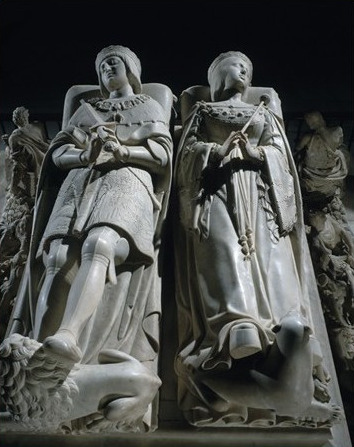


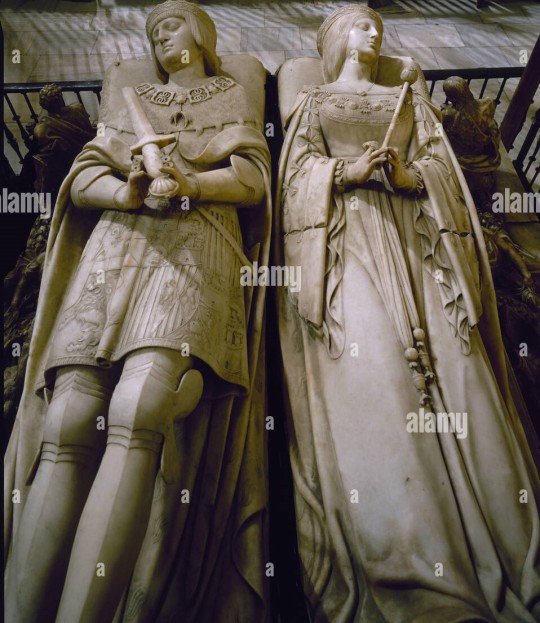


Tombs of Joanna I, Queen of Castile and Philip the Handsome by Bartolome Ordonez, 1519-1520
#bartolome ordonez#spain#Castile#sovereign#tomb#effigy#16th century#mdpsculpture#16th c. sculpture#1510s#1519#16th c. spain#1520#castille
214 notes
·
View notes
Photo



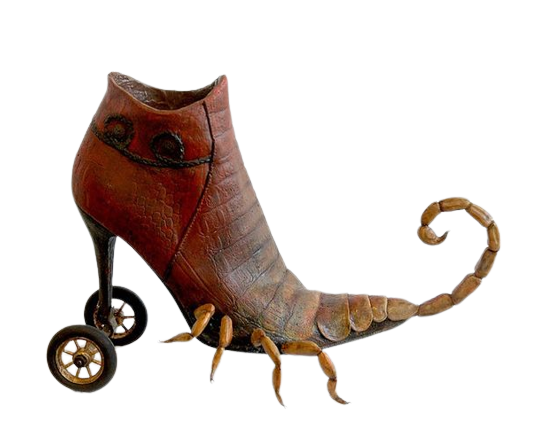

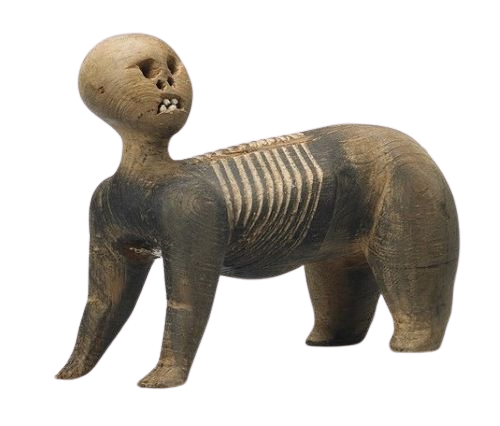
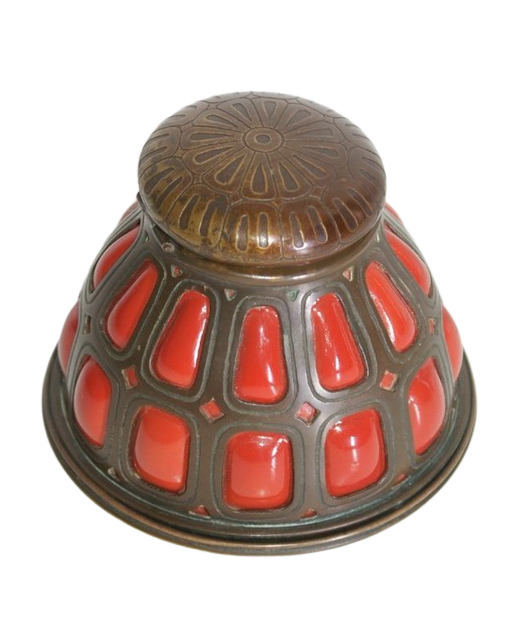

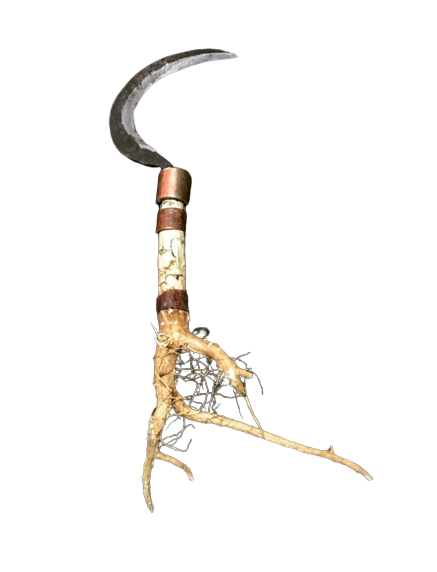
Random PNGs, part 143.
(1. Glass-stained seraphim, 2. Old book, 3. Pitcher by Paul Dachsel for Amphora Ceramics, 4. Shoe sculpture by Costa Magarakis, 5. Key from 1887, 6. Ammassalik from Greenland 1934, 7. Tiffany bronze and blow-out glass inkwell, 8. Prayer bead from late 15th or early 16th c., 9. Black henbane root sickle by Borealis Ironworks)
896 notes
·
View notes
Photo

Tulum
Tulum, on the east coast of the Yucatan peninsula in southern Mexico, was an important Mesoamerican centre which displayed both Maya and Toltec influence. Tulum was a major trading and religious centre between the 11th and 16th centuries CE and, dramatically situated near the sea, it is one of the most evocative ancient sites in Mexico.
First settled in the 6th century CE, Tulum prospered, especially so under Mayapán influence from c. 1200 CE, and was an important centre trading in such typical barter goods of the period as cotton, foodstuffs, copper bells, axes, and cacao beans. Protected by the jungle of Quintana Roo, the site survived the general Maya collapse and was largely left untouched by the Spanish.
The ceremonial complex of Tulum, built on a 12 metre high limestone cliff, was surrounded on three sides by fortification walls, while the fourth side faces the Caribbean Sea. Indeed, the very name Tulum is a colonial one and means 'wall'. The original local name may have been Zama meaning 'dawn' in reference to the site's position facing east across the sea.
Residential buildings were built outside the sacred walled area which was reserved for the rulers of Tulum. The largest structure is the Castillo (Castle) which is in fact a temple pyramid displaying architectural influences from the Toltec civilization, such as over-door niches and serpent-columns. In addition, the stucco sculpture which decorates the building recalls those at Mayapán. The halls of the Castillo, and also Structure 25, are also notable for their well-preserved examples of beam-and-mortar roofs.
The Temple of the Frescoes is a squat square building which has undergone several modifications over the centuries. In the Classic period there seems only to have been a vaulted shrine, but this was later surrounded by a larger structure which had a four-column facade. Later still, the second storey was added. Stucco faces on the exterior suggest the building was dedicated to the god Itzamnaaj.
The earliest wall paintings, which give the building its name, date to the 11th or 12th centuries CE, but some are certainly later, perhaps post conquest. They depict figures performing various actions such as a woman grinding corn on a stone (metate), the goddess Chak Chel carrying two images of the god Chahk, and the Aztec god Tezcatlipoca with his black eye band and turquoise mask. The latter strongly suggests contact with central Mexican centres. Most figures are strikingly painted in blue on a black background, and panels are divided by twisted snake-like borders, perhaps representing umbilical cords and therefore a genealogical connection between the figures. Frescoes appear on both the outer and inner walls of several other buildings at Tulum but always using only three colours – red, blue, and yellow – with outlines painted in black and accompanied by Maya glyphs.
Other structures at Tulum include the dramatically sited Temple of the Winds which was built in honour of the wind god and helped guide sailors through the reef, a palace building in a poor state of preservation, various platforms, and the Temple of the Descending God. This latter building and the presence on several other structures of stucco figures of winged gods descending suggest the site was specifically in honour of this strange deity also known as the 'diving god' and perhaps connected to the planet Venus and the associated Maya god Xux Ek.
Continue reading...
25 notes
·
View notes
Note
LWA: Regarding the halo: we see a variant in the Job minisode. When Aziraphale does his "avaunt" speech, he has a full-body aureole, which unlike the halo around the head is /not/ an angelic attribute in religious painting and sculpture. The design of Aziraphale's aureole, with golden rays emanating from his body, looks like it was modeled on Marian iconography, as in the case of the Virgin of Guadalupe (https://www.metmuseum.org/art/collection/search/635401). There are a bunch of other examples, like the Madonna of Humility at the Getty Museum, where both the Virgin and God have ray aureoles. I am not sure where the design team thought they were going with this, although it fits with the Madonna pose they used for that promotional photo of Aziraphale in his Job robes.
ahhhhh this is so interesting!!!✨ i had no idea before this that there was such a nuance between aureole and halo, and their individual meanings in iconography (and thats not even taking into account different individual depictions like mandorla etc!). given the - as ive now learnt - very subtle but definite distinction between the two, and their individual meanings in religious contexts, it seems reasonable that the design team might have gone to some lengths to research it similarly!!!
(and now i shall spam you all with research because i am excited and Must Share)
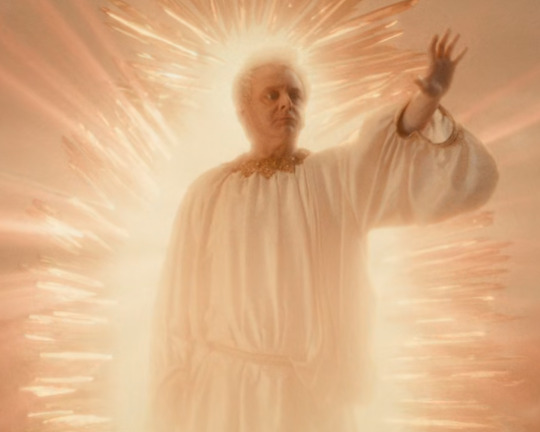

so as LWA, the oracle of all truth, has said - ep2 where aziraphale appears to crawley shows him with an aureole surrounding him, much like the multiple depictions of Our Lady of Guadalupe (above is the Virgin of Guadalupe, by Salcedo, 1779). other depictions/notable copies of the original however include:

(L-R: de Arellano, 1691, Gonzalez, c. 1698, and the original from cy/16th, upon which they're based which, as far as i can find, has no confirmed artist?).
and coming back to italian renaissance (which im slightly more familiar with), the following works show the same:

(L-R: Madonna and Child with Two Saints, Pisanello, c. 1445, The Last Judgement, Michelangelo, f. 1541, and Baptism of Christ, Verrocchio and da Vinci, c. 1475)
it is especially prevalent in christian religious art, but as LWA said it does appear to be mostly used for religious figures, and not necessarily angels or saints (most of those are depicted with halos instead). most examples, like the ones above, that ive found seem to be used exclusively for jesus and mary. in other religions such as buddhism, aureola appear to be shown in the form of a mandorla (an almond-shaped field) that surround enlightened beings, such as Buddha.


let's move onto halos; ep6 shows our funky angel removing his, and is shown in the form of a ring, emitting the same kind of light as the aureole. disks have been depicted in art from well before the time of christ, including in ancient egypt (ra) and in iran (mithra).
funnily enough, finding depictions of ring halos rather than disk/plate ones was actually quite difficult? either way - above shows Virgin of the Rocks by da Vinci, f. 1486, shows a subtle but clear ring halo over Mary's head. keeping with the cy/15-16th onwards for fair comparison, showing a combination of disk and ring halos:

(L-R: Branchini Madonna, di Paolo, 1427, Madonna of the Book, Botticelli, c. 1481, and Deposition of Christ, Raphael, 1507)
these all again are examples depicting christ and mary, so what about angels? i found the best example to look at is the annunciation to mary, as this was the subject of a number of notable pieces in the same time period:

(L-R: da Vinci, f. 1476, Fra Angelico, 1450, and Botticelli c. 1490)
all show gabriel with a halo around their head, as opposed to an aureole. the one that fascinated me though is botticelli; there is relatively little known about his depictions of the annunciation, but there are multiple - the above is in glasgow, there is another in new york, and the last is the Cestello Annunciation). however, in the first two, glasgow and new york, there is a clear feature of an aureole-type shaft of light coming from behind gabriel, and shining upon mary.
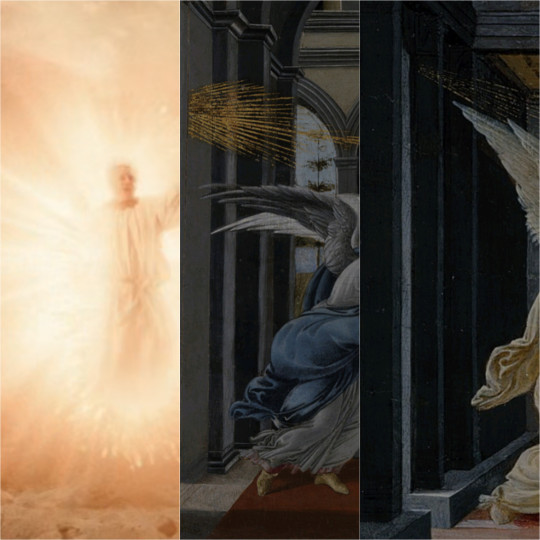
i certainly think that it's mostly representative of god's gift being bestowed on her, ("The Holy Ghost shall come upon thee, and the power of the Highest shall overshadow thee.", Luke 1:35) but the perspective of the glasgow painting almost shows like the light comes from a crack in the wall, and would suggest that aziraphale stepping out from the aureole as some sort of glorified portal is a mirror of this.
anyway, because ive rambled on long enough about nothing truly insightful; what is the point in these two different displays? well, from my research, it seems to be that aureola are used to surround the head or the body, and iconographically represent divinity, glory and, depending on the subject/context, enlightenment.
but given that it has largely been reserved in art for the depictions of the holy trinity as well as mary, to outright use it in connection with aziraphale seems... strange. in this particular scene, or part of his story, why has he been purposefully elevated to the same level of importance and power? we have no reason to suspect from the ensuing dialogue that god sent aziraphale deliberately in her name to thwart crowley, carrying her power... or did she?
the halo however appears to be specifically used for instances of depicting angels or saints (in the case of gabriel and various apostles in multiple artworks), as well as jesus and mary. so that to me would suggest that halos are somewhat specifically meant to represent innate saintliness and holiness, inherent divine nature. were specifically touched by god's grace and love, and were embodiments of god's will.
what this necessarily means in relation to aziraphale though, beyond him obviously being an angel, a representative of the heavenly host, and a messenger of god's will etc... im not entirely sure.
there is presumably no reason for him to be depicted with an aureole unless, as LWA suggests, it's to draw parallels to artwork where mary is especially shown as having one. but in the context of s2 (and the job minisode), isn't this a little out of field?
another thing - aziraphale does seem to be able to turn it on and off like a tap, suggesting that it's there in the narrative for sheer Impressiveness, to Look The Part, in front of a demon... so, is it only for design purposes, because cinematically it's bloody cool to look at? or is it meant to give insight into aziraphale's thoughts and beliefs?
with it, would he (in aziraphale's mind, bless) look intimating enough to thwart crawley's 'nefarious plan' with minimal effort? possibly, but i doubt it; im a pretty firm believer in Reasons for certain design choices, especially ones that would take a lot of post-production work to animate. so, could aziraphale have chosen to appear with the aureole, to be suitably intimidating, but after having his faith in god's will shaken after the events of job, chose not to manifest it again, because its symbolism no longer rings true for him?
#this response was an insane amount of effort#especially whilst melting in 28c heat#good omens#ask#everyone say thank you to LWA for another stellar observation and insight#fun fact: i read 'job robes' as jobes and now they will only ever be jobes to me#jobes (job robes)#halo theory#mary/pieta spec#s2 meta#costume meta
50 notes
·
View notes
Text
THIS DAY IN GAY HISTORY
based on: The White Crane Institute's 'Gay Wisdom', Gay Birthdays, Gay For Today, Famous GLBT, glbt-Gay Encylopedia, Today in Gay History, Wikipedia, and more … April 22


Today is EARTH DAY! – Earth Day's a name used for two different observances, both held annually during spring in the northern hemisphere, and autumn in the southern hemisphere. These are intended to inspire awareness of and appreciation for the Earth's environment. The United Nations celebrates Earth Day, which was founded by John McConnell in 1969, each year on the March equinox, while a global observance originated by Gaylord Nelson as an environmental teach-in, also called Earth Day, is celebrated in many countries each year on April 22.


1766 – Madame de Staël, (Anne Louise Germaine de Staël-Holstein) French author (d.1817); When old editions of the staid Encyclopedia Britannica say that someone's sex life is "unconventional," it can sometimes mean little more than the subject enjoyed something other than missionary position with his clothes on and the lights off. When a woman's sex life is even mentioned, no less described as "unconventional," then you had better sit up and take notice.
Madame de Staël liked not only men, but women, too. In 1798 the French novelist, separated from her husband, began living with a male lover, and met Juliette Récamier, the most celebrated beauty of her time. Mme. de Staël was 31, Juliette ten years younger.
"She fixed her great eyes upon me," wrote Juliette, "and paid me compliments about my figure which might have seemed exaggerated and too direct had they not seemed to have escaped from her. From that time on I thought only of Mme. de Staël."
They lived together for the next nineteen years, until the novelist died. Her final words to Juliette, to whom she had once written, "I love you with a love that surpasses that of friendship," were "I embrace you with all that remains of me."


Emile Norman with Brooks Clement
1918 – Emile Norman (d.2009) was a California artist known for mosaics, panels, jewelry and sculpture - with a meticulous attention to detail. Emile Norman grew up with a club foot on a San Gabriel Valley walnut farm. From an early age he exhibited artistic talent, carving his first sculpture from a riverside rock at age 11 - ruining his father's chisels, but also gaining his respect.
From 1946, Norman lived and worked at his studio-home in Big Sur on Pfeiffer Ridge with his partner Brooks Clement, until Clement's death in 1973 from cancer.
In 2008, actors Michael Tucker and Jill Eikenberry met Norman, purchased land from him in Big Sur, became his neighbors and his close friends - eventually taking five years to produce a PBS documentary, Emile Norman: By His Own Design. Having moved in with Norman in 2003, long-time friends Jeff Mallory and C. Kevin Smith had discovered movie film shot by Norman's partner Brooks Clement on a hand-cranked 16 mm Bolex, footage that was eventually incorporated in the documentary.
Norman died September 24, 2009 in Monterey, California at age 91, survived by three sisters.


1946 – John Waters was born on April 22. Recognizable by his pencil-thin moustache this American filmmaker, actor, writer, personality, visual artist and art collector, rose to fame in the early 1970s for his transgressive cult films and has, against all intuition and all odds has become the toast of Broadway with not one, but two major musicals based on his cinematic oeuvre.
For his 16th birthday, Waters received an 8mm movie camera from his maternal grandmother, Stella Whitaker. His first movie was Hag in a Black Leather Jacket. According to Waters, the film was shown only once in a "beatnik coffee house" in Baltimore. Waters was a student at New York University (NYU) in New York City.
In January 1966, Waters and some friends were caught smoking marijuana on the grounds; they were soon expelled. Waters returned to Baltimore, where he began work on his next film, Eat Your Makeup, which was filmed that year. Waters' films would become Divine's primary star vehicle. Waters' early films were all shot in the Baltimore area with his company of local actors, the Dreamlanders. In addition to Divine, the group included Mink Stole, Cookie Mueller, Edith Massey, David Lochary, Mary Vivian Pearce, and others. These early films were among the first picked up for distribution by New Line Cinema. Waters' films premiered at the Baltimore Senator Theatre and sometimes at the Charles Theatre.
Waters' early campy movies present filthily lovable characters in outrageous situations with hyperbolic dialogue. His early films, Pink Flamingos, Female Trouble, and Desperate Living, which he labeled the Trash Trilogy, pushed hard at the boundaries of conventional propriety and movie censorship. A particularly notorious final segment of Pink Flamingos, simply added in as a non sequitur to the end of the film, featured, in one take without special effects, a small dog defecating and Divine eating the feces.
His 1981 film Polyester starred Divine opposite closeted, once-teen-idol Tab Hunter. Since then, his films have become less controversial and more mainstream, although works such as Hairspray, Cry- Baby and Serial Mom still retain his trademark inventiveness. The film Hairspray was turned into a hit Broadway musical, which swept the 2003 Tony Awards, and a movie adaptation of the Broadway musical was released in theaters on July 20, 2007.
Waters' most recent film, the NC-17-rated A Dirty Shame, was a move back toward his earlier, more controversial work of the 1970s. He also had a cameo in Jackass: Number Two, which starred Dirty Shame co-star Johnny Knoxville. A Gay American, Waters is an avid supporter of Gay rights and Gay pride.


1953 – Charles Farthing (d.2014) was a New Zealand doctor who specialised in the treatment of AIDS. He was the Medical Director of the AIDS Healthcare Foundation from 2001 to 2007. He later worked at Merck Sharp & Dohme as the Director of medical affairs for infectious diseases in the Asia-Pacific.
Farthing was born on 22 April 1953 in Christchurch, New Zealand. His father was an accountant and his mother was a music teacher. He was educated at Christ's College, Christchurch, an independent boys school. As a child he had considered entering the priesthood. He went on to study medicine at the University of Otago in Dunedin.
Farthing began his medical career in New Zealand where he practiced as a dermatologist. After five years, he moved abroad and worked for a year in Riyadh, Saudi Arabia. He then moved to England and joined St Stephen's Hospital in Chelsea, London. Between 1985 and 1987, the numbers of AIDS patients treated at St Stephen's rose from a dozen to over 1000. From 1985 to 1988, he was involved in clinical trials for the antiretroviral drugs Thymosin, AZT and foscarnet. In 1987, he helped found the Kobler Center at St Stephen’s Hospital which specialised in the treatment and research of HIV/AIDS. It was one of the first wards in the United Kingdom to specialise in the area. He was Chair of the all-party parliamentary committee on AIDS during the late 1980s, and was instrumental in guiding the governments reaction to the AIDS crisis.
In 1988, he was awarded a Winston Churchill fellowship which allowed him to move to the United States of America where he studied AIDS at the Bellevue Hospital in New York. He later became the Director of the hospital's AIDS treatment program. In 1994, he moved to Los Angeles where he became the principal investigator of the AIDS Healthcare Foundation, and in 2001, he was promoted to Medical Director. In 2007, he left the United States for Hong Kong where he joined Merck Sharp & Dohme. At the time of his death, he was Director of medical affairs for infectious diseases in the Asia-Pacific.
In the 1990s, after moving to America, Farthing played a leading role in the introduction of the triple drug therapy that has transformed survival rates and quality of life for those infected with HIV. In 1997, frustrated by the way in which safety concerns were preventing tests of HIV vaccines on live human candidates, he volunteered to try the vaccines himself. "Someone has to go first," he explained. "Medicine has changed. Years ago, people took risks. Now it is as if research cannot expose anyone to risk. That is why this research is going so slowly."
In the event, discouraging results from tests of a similar vaccine in monkeys meant that the trials did not go ahead.
Farthing died of a heart attack in a Hong Kong taxi in 2014.
Farthing was gay. At the time of his death he was in a relationship with Dougie Lui, a hotelier.


1956 – Phill Wilson founded the Black AIDS Institute in 1999 and is a prominent African-American HIV/AIDS activist. Wilson is himself both gay and HIV-positive. His partner, Chris Brownlie, died of HIV-related illness.
Prior to founding the Institute, Wilson served as the AIDS Coordinator for the City of Los Angeles from 1990 to 1993, the Director of Policy and Planning at AIDS Project Los Angeles from 1993 to 1996. He was co-chair of the Los Angeles County HIV Health Commission from 1990 to 1995, and was an appointee to the HRSA AIDS Advisory Committee from 1995 to 1998.
Wilson grew up in Chicago. His parents had moved north from the southern states like many black Americans did after World War II. Both his parents worked outside the home, but they also provided a strong, supportive environment within the family. He grew up learning a commitment to family and to the community too.Wilson was often involved in civil rights activities in the Chicago area, such as Operation PUSH, Operation Breadbasket, and Black Expos, according to Out Magazine. He credits his family with continuing to support him after he came out to them regarding his sexuality. Wilson told Out a story about how he and his former lover, Chris Brownlie, had been to a family reunion and an in-law commented to a cousin about their presence after they had left. "My cousin," said Wilson, "who is a very committed, active, and faithful Jehovah's Witness told this woman, 'that man is my cousin. He is welcome here, and his partner's welcome here. They're a part of our family. You can't come to my house and talk about my cousin and his partner that way. That's not allowed.'"
Phill Wilson has always been busy. He was busy in high school with community activities and still managed to graduate early. He worked hard for American Telephone & Telegraph (AT&T) and was married for a short time. He described himself as naive to his sexuality until he heard a radio interview with a publisher of gay magazines. He then went about trying to locate the gay community in Chicago and met his partner of 10 years Chris Brownlie in 1979.
In 1981 Wilson said he "had enough of the cold weather of Chicago." He and Chris moved to the Los Angeles area. They ran a giftware manufacturing company called Black Is More Than Beautiful. By this time both Phill and his partner had heard of AIDS. Some of their friends had been ill or had died. Wilson said around this time both he and Chris had biopsies of their lymph nodes taken, because they had been swollen for a long time. "No one knew what caused AIDS then," said Wilson. "The doctors told Chris and I that there were abnormalities to the lymph nodes but they couldn't tell us what it meant."
As the years progressed more friends grew ill and people learned a virus caused AIDS. In 1986 California placed Proposition 64 - a proposal calling for the forced quarantine of all people with AIDS - on the election ballot. Both Wilson and Brownlie volunteered to work for a committee opposing the passage of this proposal.
About the time of the November of 1986 election Brownlie became ill. Wilson said Brownlie's illness, plus the amount of time they found themselves working on the ballot proposal led them to close down their giftware business. With their efforts Proposition 64 went down to defeat. In 1986 Wilson also founded a group called the AIDS Prevention Team. This group was started with a small grant Wilson received while volunteering with a social organization called Black and White Men Together.
In early 1987 Wilson and Brownlie were both diagnosed with HIV infection, which nearly always gives way to full blown AIDS, an often sexually transmitted condition in which the body's immune system is depressed, making one susceptible to a host of health problems, usually becoming fatal. In fact, Brownlie's illness was classified as AIDS. This diagnosis just seemed to make Wilson and Brownlie work harder. They also founded the AIDS Health Care Foundation around that time, which has grown into the largest nonprofit HIV medical services provider in Los Angeles County. It now includes the Chris Brownlie Hospice, named for Wilson's late partner.Phill Wilson is realistic in his work with AIDS. He knows the heavy losses of colleagues and friends. His lover Chris died in 1989. He wrote about the grief and anguish in Advocate magazine in 1992. He often speaks of his work as war. But the necessity of the work keeps him going.
"If you don't do any of that long term planning," he told Out, "then you're assuring that it's going to be around another 5, 10, 15, or 20 years."
"By the time we have the infrastructure we have to have," said Wilson in POZ, "I'll probably be dead. But right now I'm doing what I'm doing and living my life as I see it."


1975 – Jónsi (Jón Þór Birgisson) is the guitarist and vocalist for the Icelandic post-rock band Sigur Rós. He is known for his use of a cello bow on guitar and his falsetto voice. He is also blind in his right eye and is openly gay.
Apart from Sigur Rós, Jónsi also performs together with his boyfriend Alex Somers as an art collaboration called Jónsi & Alex. They released their self-titled first book in November 2006, which was an embossed hardcover limited to 1000 copies,along with their first album, Riceboy Sleeps, in July 2009. On December 1, 2009, Jónsi's official website, jonsi.com, was launched in anticipation of his debut solo album, Go, which was released the week of April 5, 2010. After the release of the album, Jónsi promptly started a worldwide tour across North America and Europe, featuring songs from the album plus a few other selections.


1982 – Thomas Bridegroom was born in Knox, Indiana, USA as Thomas Lee Bridegroom. He was an actor, known for The X-Effect (2006), Bridegroom (2013) and The Janice Dickinson Modeling Agency (2006).
Tom was born and raised in Knox, Indiana and finished high school at the prestigious Culver Military Academy. Tom excelled at CMA, winning the Hobie Leadership award, which garnered him a trip to Washington, D.C. to meet with the president. After graduating from CMA Cum Laude, Tom enrolled in Vassar College, where he trained in voice and piano.
Although he was succeeding in his academic career at Vassar, Tom made the decision to leave school early and pursue his true calling: a career in the entertainment industry. Tom co-wrote the powerful and meaningful song, “Lost” with his friend Paige Williams, which attracted attention from the music industry, as well as writing numerous other songs with many other talented musicians, and on his own.
Tom also pursued ambitions of acting and being in front of the camera. Tom gained national recognition at the age of 23 when he was chosen as the Hot Boy Next Door for the popular magazine, Teen People, for the October 2005 issue.In 2005, Tom met his partner, Shane Bitney Crone. Shane and Tom started a social media/public relations company, Bridegroom and Bitney, in 2008.
He died on May 7, 2011 in Los Angeles, California, USA when he accidentally fell off of the roof of his friend's four story building. After his death, Tom's family refused to acknowledge their relationship, and because of this his partner Shane Bitney Crone was prevented from being by Tom's side for several hours as Tom was in the hospital, and was even warned to stay away from the funeral by his family – and even threatened with violence if he were to appear. This is chronicled in the documentary Bridegroom (2013).


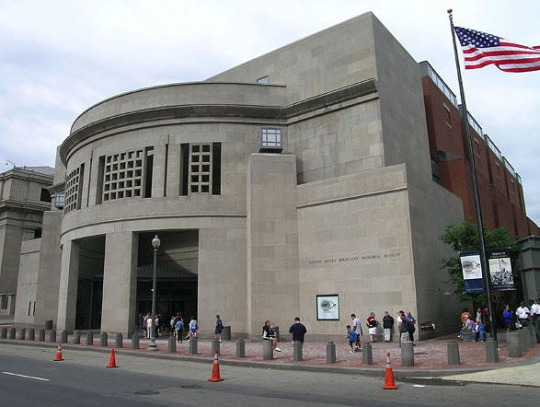
1993 – On this date the United States Holocaust Memorial Museum was dedicated in Washington, DC. It marked the first time the United States government inscribed the words "Gay" and "Lesbian" in stone in the museum's exhibit on Gays and Lesbians killed by the Nazis in World War II.


2014 – Harvey Milk is the first openly gay elected official on a U.S. stamp. He was an American politician and the first openly gay elected official in the history of California where he was elected to the San Francisco Board of Supervisors in 1977. He fought and defeated the anti-gay Prop 6. Milk was assassinated in 1978 by Supervisor Dan White.


11 notes
·
View notes
Text


Architecture and Monuments: Great Sphinx of Giza - Egypt
The Great Sphinx of Giza is a limestonestatue of a reclining sphinx, a mythical creature with the head of a human and the body of a lion. Facing directly from west to east, it stands on the Giza Plateau on the west bank of the Nile in Giza, Egypt.
The Sphinx is the oldest known monumental sculpture in Egypt and one of the most recognizable statues in the world. The archaeological evidence suggests that it was created by ancient Egyptians of the Old Kingdom during the reign of Khafre (c. 2558–2532 BC).
A special feature of the Sphinx is its actual lack of a nose. The circumstances surrounding it about being broken off are uncertain, but close inspection suggests a deliberate act using rods or chisels. Contrary to a popular myth, it was not broken off by cannonfire from Napoleon's troops during his 1798 Egyptian campaign. Its absence is in fact depicted in artwork predating Napoleon and referred to in descriptions by the 15th-century historian al-Maqrīzī.

It is unknown how the name of the Sphinx came to be, due to propably multiples origins, for example of its creator of the Old Kingdom, as the Sphinx temple, enclosure, and possibly the Sphinx itself was not completed at the time, and thus cultural material was limited. In the New Kingdom, the Sphinx was revered as the solar deity Hor-em-akhet (English: "Horus of the Horizon"; Hellenized: Harmachis)
The commonly used name "Sphinx" was given to it in classical antiquity, about 2,000 years after the commonly accepted date of its construction by reference to a Greek mythological beast with the head of a woman, a falcon, a cat, or a sheep and the body of a lion with the wings of an eagle (although, like most Egyptian sphinxes, the Great Sphinx has a man's head and no wings). The English word sphinx comes from the ancient Greek "Σφίγξ" (transliterated: sphinx) apparently from the verb σφίγγω (transliterated: sphingo / English: to squeeze), after the Greek sphinx who strangled anyone who failed to answer her riddle.

Over the centuries, writers and scholars have recorded their impressions and reactions upon seeing the Sphinx. The vast majority were concerned with a general description, often including a mixture of science, romance and mystique.
From the 16th to the 19th centuries, European observers described the Sphinx having the face, neck and breast of a woman. Examples included Johannes Helferich (1579), George Sandys (1615), Johann Michael Vansleb (1677), and some others following it. Most early Western images were book illustrations in print form, elaborated by a professional engraver from either previous images available or some original drawing or sketch supplied by an author, and usually now lost. Seven years after visiting Giza, André Thévet (Cosmographie de Levant, 1556) described the Sphinx as "the head of a colossus, caused to be made by Isis, daughter of Inachus, then so beloved of Jupiter". He, or his artist and engraver, pictured it as a curly-haired monster with a grassy dog collar. Athanasius Kircher, however, depicted the Sphinx as a Roman statue
#super wings#super wings cultural#ancient monument#historical architecture#cultural monument#cultural history
11 notes
·
View notes
Text
More mystery with portraits of Hasburgs
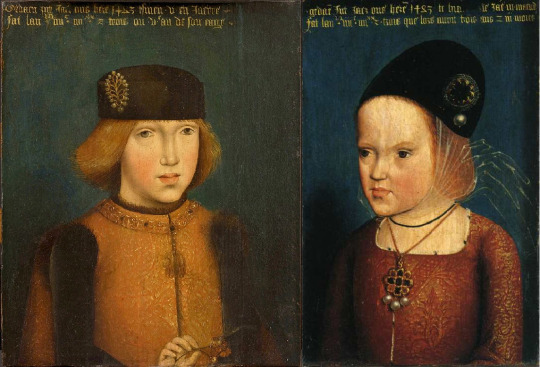
These two paintings are located in different museums, but are believed to be once a part. Currently they are labelled currently as Philip of Austria and Margaret of Austria, 1483, by Master of Legend of Magdalene.
And it's kind of a problem. Because at least the boy doesn't look like early work of this artist at all! Not even remotely close.
So other artists have been suggested instead, and for example the girl's has been most recently labelled as by Pierre Coustain.
Which doesn't make any sense either. Because while this was court artist in Burgundy, he specialized in making coat of arms and flags, sculptures etc. Like we can speculate on Pierre Coustain's involvement in these portraits(figures by Pieter van Coninxloo):

But only about the coats of arms. This guy wasn't portraitist.
...And you know me, I am nitpicker. I my motto is:
Never trust period label...because often times they are added centuries later.
So of course I checked the labels. On first glance, they seem as very genuine. This form of letters was around in 15 and 16th century.
...So I needed some help reading it, but luckily on wikipedia it was in description of paintings.
Girl's:

Gedaen Int Jaer ons here 1483 tsinen v en Jaerre/FAT LAN M.IIII.C.IIII.XX ET TROIS QUE LORS AUOIT TROIS ANS ET TROIS MOIS)
This was created in 1483 and she is 3 years and 3 months old.
(Very specific...oddly so.)

Gedaen Int Jaer ons here 1483 tsinen v en Jaerre / Fat Lan m. III c. IIII xx. z trois ou ve. an de son eage.
Once again it says year 1483, but that Philip is 3 or 5 years old.
Like how does nobody question this? You cannot be specific to month with girl, and not know how old the boy was!
Unless the label is not original at all! And likely not even done in 15th century. Because at those days, labels weren't really popular. They took off mainly in 16th century. And given the amount of mistakes I doubt Margaret nor Philip were even alive when this occured.
Because have they been, somebody would take greater care in getting it correct!
(And, If the text is from much later it is damn well-made.)
So if text is untrust-worthy, the dating of 1483 is also untrust-worthy, and then we cannot even be sure it is Philip or Margaret!

And though the boy doesn't fit Master of Legend's early work, he damn sure looks very alike to his late work! (1510-1527)
But then these kids cannot be royals from Netherlands. This is not its fashion from 16th century. We have portraits of Philip's kids raised in Netherlands, we know what they wore.
And while, yes the girl's hat looks bit like 1460-1470s male hats worn in netherlands, girls didn't wore this I checked. And given Netherlands were already back then northern capital of painters. It's very unlikely it wouldn't appear in art of that time from that country.
So possibly these are foreign royalty. But whom?
Well, artist started working around 1480/1490 and stopped about 1527. (Assuming we have correct artist.)
And the boy wears order of golden fleece around his neck. And clearly he is not adult. List of knights of Order of Golden fleece is on wikipedia and it includes when people got it and their birth year.
So finding people who got it before age of 15 in corrrect timeframe wasn't that hard.
Six candidates:
Philip of Austria (who it is currently identified as)
Henry VIII
Charles V
Ferdinand I, Holy Roman Emperor
Louis II, King of Bohemia and Hungary
Philibert of Chalon
But at age of 14 and 13, Henry VIII and Philibert are simply too old...to be depicted here. And Louis II's sister was older than he. And we know what Charles and his sisters raised in Netherlands wore.
Thus if not Philip and Margaret, the only other valiable option is Ferdinand and Catherine of Austria.
(if the list of candidates was complete...)
And it just so happens that if you put correct dimensions to these(in cm), and put them in order of birth, they don't look so weird...

Potentially this might have once been full set of siblings.
Done firstly around 1507(first four)
and rest after 1515, when Ferdinand became the member of the order.
...And if we compare what the girl wears with spanish fashion, then at least in examples from 1490s similiar hats were popular(not as much raised, but we always see them on adults. Maybe then the raise is not so high, and traluscent veils of this kind even much later(those are with cofia de tranzado)...this shape of neckline, also very popular in Spain at least around turn of the century.

In my research into iberian fashion, i didn't go that much into fashion after 1505(not in debt) and it's not ideal that I point to examples about 20 years prior to when I think it might be.
But it is a possibility, and would explain the resemblence.
...
However then we have to assume 2 more possibilities.
A) the list of knights of order of fleece was not complete...and we're missing candidates...and then once again, where does the fashion point us?...Spain in case of girl...
B) But what if the boy and girl don't belong together?
What if they just had same background(popular in Burgundian/Netherlandish court from 1450? to about 1507)
and same dimensions(by chance, or they were later cut to make them same dimensions)?
(C)what if both options? L)ist wasn't complete and boy and girl don't belong together?
Well, the boys who got orders of golden fleeces as kids were usually royalty, with whom Hasburgs had friendly relationship.
Only other option already not covered, would be either Christian II of Denmark-but he was made member in 1519-so he is on the list, as adult...
or John, Prince of Asturias and Girona. He married Margaret of Austria, in 1497 and died that same year. And Joanna married Philip of Austria in 1496.
We know Margaret's portraits were created in early to mid 1490s, likely to be sent to Spain, and probably Philip's also.
But what if Spanish send reply? And Hasburgs send their own painter, to paint Spanish royal children? That would also explain resemblence to Joanna's children. Because boy would have to be her brother, and girl Joanna herself.
Again, the boy seems to be later work of the master, but it was a workshop. It is possible one of its member simply became more prominent later in workshop's lifetime and it happened to be him who was sent to paint the boy.
And i cannot get further than this. Dendrology would be helpful here.
However as these portraits have year upon them, the institutions who own them think they have the correct date already. We can only hope they decide to test it anyway.
11 notes
·
View notes
Photo

Study sheets with sketches of interiors, animals, sculpture, figures, notes. 16th century. Credit line: Purchase, C. G. Boerner Gift, 2008 https://www.metmuseum.org/art/collection/search/383274
#aesthetic#art#abstract art#art museum#art history#The Metropolitan Museum of Art#museum#museum photography#museum aesthetic#dark academia
9 notes
·
View notes
Text

REST AFTER DEBAUCHERY
Attributed to Francesco da Sangallo. Reclining Pan (aka the Barberini Pan). c. 1535. White reused classical marble with colored marble details. 134 cm long. Saint Louis Art Museum.
This handsome sculpture was acquired by the Barberini family in the early 17th century. At that time, the family collection was overseen by Cardinal Francesco Barberini, the nephew of Pope Urban VIII. The sculpture stayed in the collection until 1947, when the cash-strapped heirs of the Pope and Cardinal sold it to the Saint Louis Art Museum (SLAM) via a middleman. I'm not sure how the sale was allowed, but the museum website obliquely mentions that the sale was facilitated due to legislation enacted under Benito Mussolini.
The work depicts the lustful Arcadian god of forests, fields, and glades lying on his back in a splay-legged fashion holding a reed pipe (syrinx) in his right hand while his right arm is coddling a wineskin that once served as a fountain. His left arm is draped over his head, and his left hand is fondling a goat skin he is wearing around his neck. A salamander scurries amongst clusters of grapes at his feet (hooves). It appears he may be recovering from Bacchanalian debauchery or the unsuccessful pursuit of Syrinx as a love interest.
The sculpture was thought to be a work of antiquity until the 19th century, when it was determined to be a 16th-century work in the Florentine tradition. The initial knee-jerk attribution reaction was to claim it was by the hand of Michelangelo. When it entered the SLAM collection, it was attributed to Giovanni Angelo Montorsoli, a pupil of Michelangelo. Dr. Judith Mann, the curator of SLAM's European art, now gives it to Francesco da Sangallo, an assistant to Michelangelo. Dr. Fernando Loffredo contests this attribution to Sangallo, arguing it should be given to Giacomo da Cassignola. The art of connoisseurship has not provided a slam-dunk candidate in this case (pun intended).
There are two major reasons why the work was considered to be ancient for centuries: (1) it was repurposed from ancient marble recycled from a 2nd-century frieze (portions of an ancient relief are still visible on the backside of the sculpture - see the comments), and (2) it purposely imitated antique forms. Using Italian art history terms, the artist created an "all'antica" statue using "marmi antichi."
Unlike some examples of actual antique sculptures whose subjects are also reclining in a splay-legged fashion (e.g., the famous and heavily-restored Barberini Faun in Munich and a bronze Drunken Satyr in Naples), this work provides its subject with a modicum of privacy. Rather than displaying his genitalia in full view, Pan's manhood is covered by a flimsy drapery (see the comments).
127 notes
·
View notes
Text
Armor: Beyond the Extants
The casual study of armor is dominated by an obsession with the extants, the surviving elements of armor that have been preserved in museums, private collections, and armories or that have been recovered archaeologically. While these pieces remain an invaluable source of information for scholars and laymen alike, there are a great many things they cannot tell us. In order to fill in these gaps in the record, scholars in the study of armor make heavy use of both artistic depictions of armor and the historical record, each of which brings its own advantages and disadvantages. Artwork is a particularly valuable resource, as it allows scholars to see precisely what the artist intended, without the vagaries of interpretation frequently left in the historical record.
There are many disparate kinds of artistic works from the medieval and early modern periods which depict armor and are used by scholars of armor. Here, they will be divided into three broad categories: Paintings, Sculpture, and The Rest.
Paintings
Paintings are among the most commonly utilized and widely recognized forms of medieval artwork. Here, the term “painting” is used in a broad sense; while this category does include the typical paint on canvas framed upon a wall, other varieties of painted works are also included.
Portraits are some of the most instantly recognizable forms of painting. Typically in the traditional form, many wealthy and influential men have had their portraits painted over the years, a tradition that lasts even to this day. The practice of being painted in one’s armor is one that came to be common in the 16th century. The portrait pictured below depicts Alfonso I d’Este, Duke of Ferrara and a commander in the Italian Wars.

The portrait of Alfonso d’Este radiates wealth, power, and military prowess. Trimmed with gold, his armor represents the height of Italian fashion. The golden chain hanging around his neck displays even more wealth, as well as clearly marking him as a military man and a member of the prestigious knightly order of St. Michael. His surcote is made from an expensive blue silk velvet, and his gilded sword suspended by a blue silken sash. In one hand, he wields a gilded mace (a stand-in for the baton of command, a typical symbol of authority at this time), while the other rests upon the muzzle of a cannon. Though his gauntlets are doffed, they are placed prominently on the table before him, and in the background a battle rages.
This portrait speaks to many things which could not otherwise be known. Even had this armor which Alfonso wore survived, the velvet surcote almost certainly would not have. Additionally, many surviving elements of armor have had their decoration fade over time, or be scrubbed clean by modern collectors. The gilding which decorates this armor may also have never been known to us.
Portraits such as this one are invaluable, and extremely reliable, references for the study of any material culture, including armor. Typically, the portrait depicts what the artist had seen, what actually lay before them. They leave little room for misinterpretation. This is in contrast to our second category of painting.
Religious and Historical Paintings were common throughout the medieval period and well into the 16th century. This category generally includes framed paintings, frescoes, and painted altarpieces. While the paintings of this category are extremely prevalent, and common across the entire medieval period, they require a special degree of caution. While many religious paintings depict religious and historical figures in gear contemporary to the time the figure was painted (see below, an altar panel depicting the Saints George and Sebastian painted c. 1507-1510) some artists also made attempts to make their scenes feel more ancient to a medieval audience.

Below is pictured a detail from the Santa Croce altarpiece, painted between 1325 and 1328 by Ugolino di Nerio. This particular panel depicts the betrayal of Judas and the arrest of Jesus by Roman troops. The Romans in question are depicted in a mix of contemporary and fantastical equipment. The feathered frills on the Roman’s arms and skirts (sometimes called pteruges) are indicative of this fantastical style, and the closely-fitted, almost muscular garments the soldiers wear over their bodies are meant to mimic the “heroic” muscled figures of classical sculpture, indicating an ancient scene to the medieval viewer.

The final category of painting which will be discussed here is the Miniature. While miniatures often contain religious or historical imagery, and so are subject to the same needs for caution as listed above, they operate by different enough rules to warrant their own discussion.
Miniatures are a form of marginalia, tiny paintings added into the margins of manuscripts. As such, though they frequently bear incredible levels of detail for such small works of art, they leave much room for error and interpretation. Miniatures are extremely plentiful, and a very popular source for the study of armor, and when utilized with the appropriate degree of caution, they are indispensable.
Perhaps among the most famous manuscript miniatures are those in MS M.638 at the Morgan Library in New York City. Also called the Maciejowski Bible, or the Crusader Bible, MS M.638 was made in Paris in the 1240’s. Filled with remarkable illustrations, this manuscript is an incredible source for all manner of 13th century material culture, but is especially well renowned for its depictions of 13th century knights and men-at-arms.
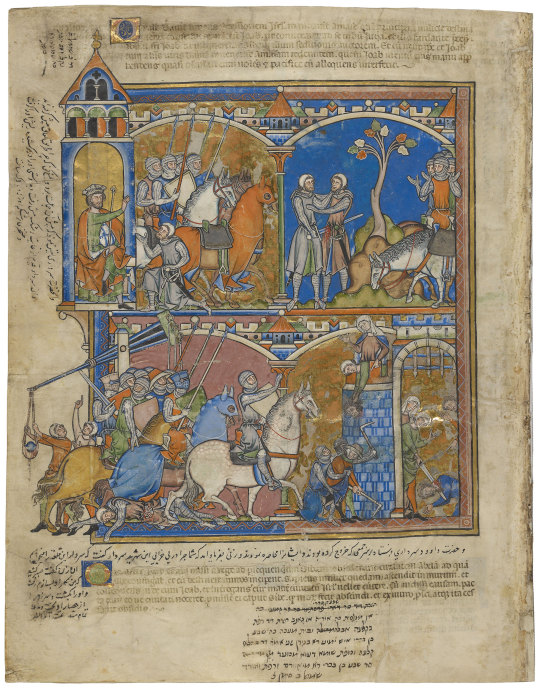
Sculpture
In the category of sculpture, we will first discuss Architectural Sculpture. While with all pieces of art it is best to determine when the individual piece was made, this is particularly true for architectural sculpture. For instance: pictured below is a piece of sculpture off of the Santissima Annuziata in Florence. Though this church was originally built around 1250, it has since been renovated many times. This piece of stonework is not a part of the original structure, but instead was added during one of the renovations. As such, this sculpture does not date to the middle of the 13th century, but instead to the first half of the 14th century, and is representative of military equipment of that time.

The second sculptural category is Effigies. A form of artwork that has seen a recent intensification in use by armor scholars thanks to the Armour of the English Knight series by Dr. Tobias Capwell, effigies (which are typically carved in stone, alabaster, wood, or even bronze) represent a particular individual. Much like portraits, effigies are extremely reliable sources for armor. In his first book, Armour of the English Knight 1400-1450, Dr. Capwell includes an essay defending the accuracy of effigies. He states:
Concepts of purgatory and the way that it worked developed substantially during the twelfth century, with one of the central principles becoming this link between the living and the dead. The living could come to the aid of the dead through intercession- the offering of prayers for the departed soul. As Saul has shown, effigies were intended to work as a kind of intercessionary lens, focusing memories of the deceased and thus facilitating the success of the prayers on their behalf.
As such it was the effigy sculptor's spiritual duty to create a sculpture which was as close to real life as possible, so as to aid the departed soul on its path through purgatory. Frequently, these effigies were even painted. Pictured below is the effigy of Thurstan de Bower at the church of St. John the Baptist in Tideswell, England, dated to 1423.
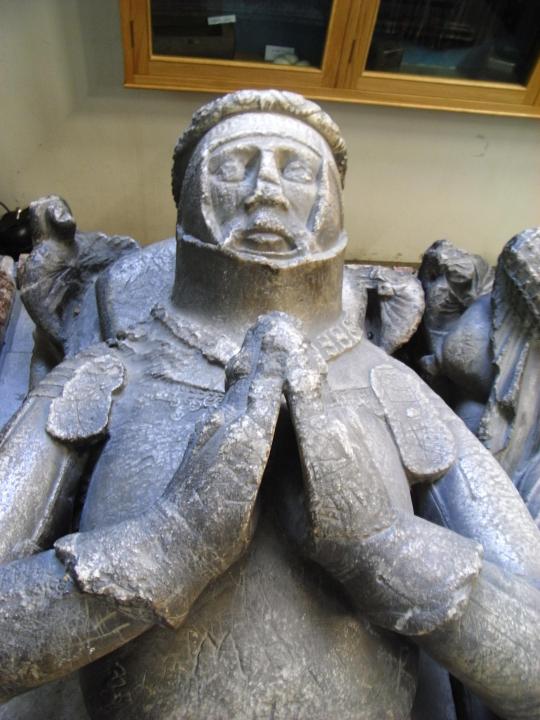
Like other forms of sculpture, however, it pays to know when the effigy was made. In many cases, the effigy was commissioned either before the individual’s death or after by their loved ones. Very rarely does an effigy actually precisely represent the year of the individual’s death, and typically the effigy will present armor contemporary to the time of its manufacture, not the time of the deceased individual’s death.
Many other forms of sculpture persist from the middle ages which occasionally depict martial material culture. Commonly altar pieces carved from wood and alabaster survive, as do statues of saints and other similar sculptural elements. These sculptures follow the same rules as listed above in regards to their usefulness and elements to be weary of.
The Rest
With the primary sources covered, it’s time to move on to The Rest. While the above constitute the most important and most consistently utilized artistic sources for the study of armor, they are by no means the only sources. The armor-clad man-at-arms was central to the image of the ruling medieval class, and as such it suffused every aspect of medieval art. Men-at-arms may be seen in tapestries,

on eating ware,

and even on gaming boards.

What’s important is that, no matter the source, you approach it with a keen, critical eye and that you never stop looking.
234 notes
·
View notes
Photo

Tomb of a woman from the Adelsheim family in Germany, 1543
#tomb#germany#releif#16th c. Germany#german style#mdpsculpture#16th c. sculpture#1540s#16th century#1543
77 notes
·
View notes
Text
For #WorldElephantDay 🐘:
Dancing Ganesha sculptures at The Walters Art Museum:
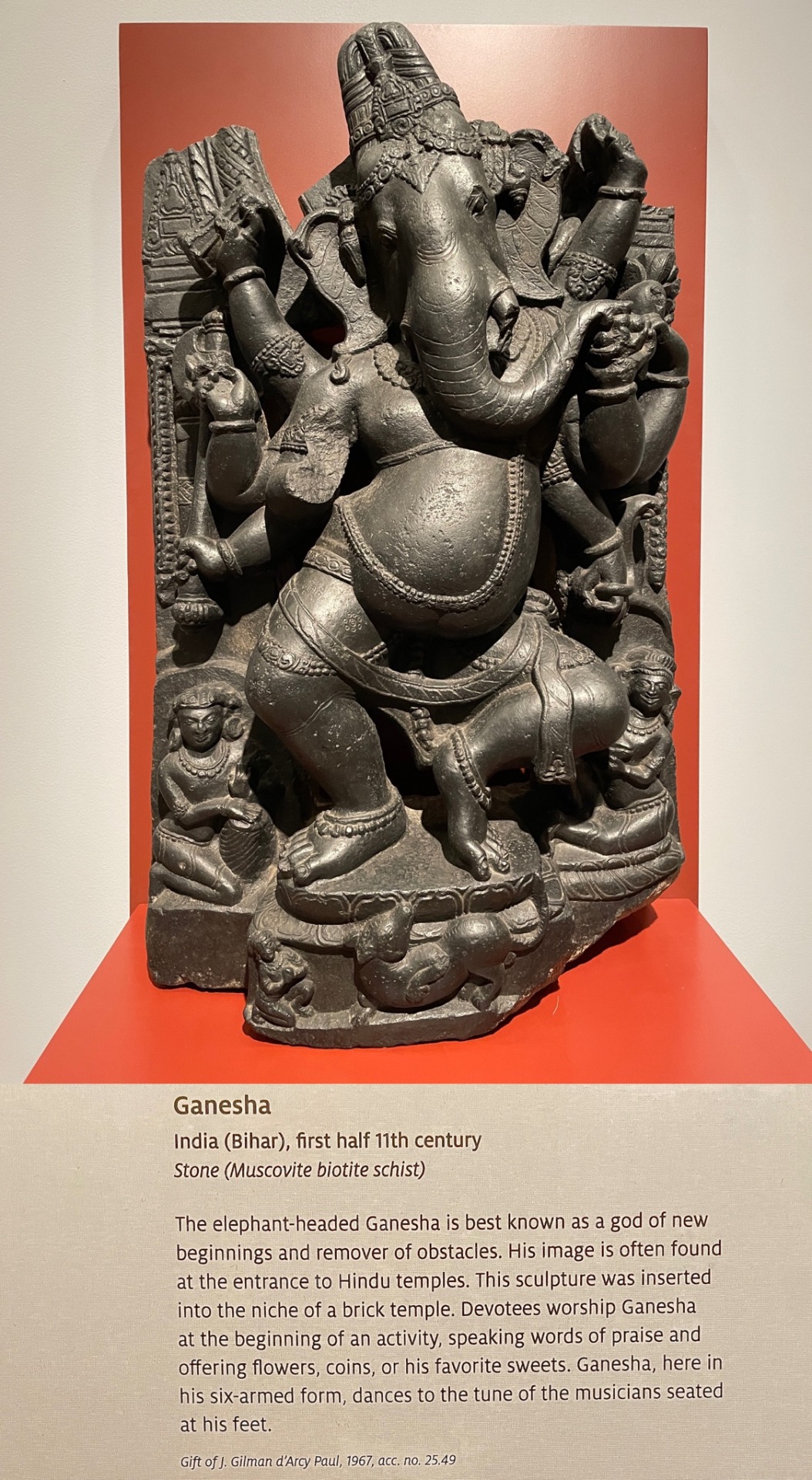
1. India (Bihar), 1st half 11th c., stone (Muscovite biotite schist)
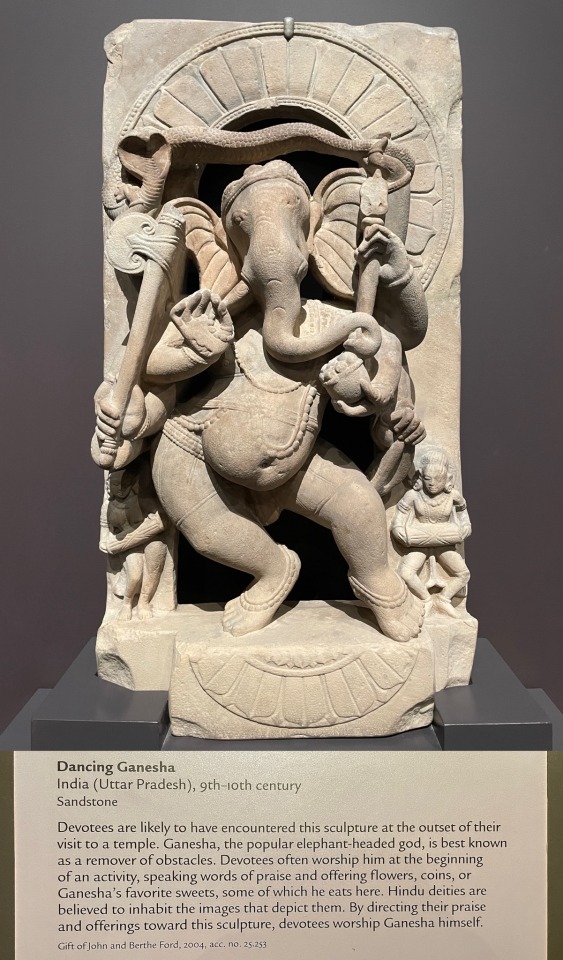
2. India (Uttar Pradesh), 9th-10th c., sandstone

3. Nepal, 15th-16th c., gilded copper alloy
#animals in art#South Asian art#Asian art#Indian art#Nepali art#Ganesha#sculpture#Walters Art Museum#museum visit#World Elephant Day#elephant#Hindu art#Buddhist art#stone#metalwork
9 notes
·
View notes
Text
Doc's favorite artists explained
Hyeronimus Bosch: from a giant hollow head emerge little creatures. You can see biblical allegories everywhere, but the little creatures are so weird and so numerous you get distracted. Someone is wearing a toilet as a hat. On the background, a city is on fire. The piece is titled Why Catholicism Is For Idiots.
Peter Brueghel the Elder: a relatively normal landscape is dotted with characters that, if you look closely, are all puns that only work in 16th Century Dutch. They include skeletons, butts with faces on them, and something that you are sure is a French caricature. The piece is titled Allegory Of St. Lawrence Being Grilled.
Salvador Dalí: a gigantic anthill, a melting television set, knitting needles, a naked torso, an egg, and a sofa all make out a silhouette that you can recognize as Elvis upside down. One of the objects I just mentioned is transparent, and another is stretched out. The piece is titled The King Strokes His Cock As An Egg Watches.
Remedios Varó: there is a woman with cat ears floating peacefully down a forest path. She is ghostly and transparent and the trees have eyes. The moon, which as a face and a large beard that turns into a sparkling river halfway through, is looking down on her. The piece is titled The Moon's Beard Is A River.
Johfra Bosschart: a grotesque creature too ugly to be described rides a scorpion as another watches. The background has Hermes Trimegistus sitting on a ruined tower. The floor is made of jagged flesh that melts into interlocking bodies, one of which is a fetus. The piece is titled Nowhere To Have A Decent Breakfast.
René Magritte: the sky has a hand-shaped hole in it from which we can see the forest. The hole covers the sun, albeit it is night. Also, the sky is framed with curtains upon which read the words "YOU FELL FOR IT". And on the foreground, there is a man in a suit looking out of the frame. The piece is titled The Long Funeral.
Patricia Piccinni: a sculpture depicting a human being grossly distorted to have the proportions and facial features of a pangolin yet it also has breasts, vomiting its own children, as an elderly lady watches with an amused expression sitting on her bed. The piece is titled The Nursing.
M. C. Escher: an Italian architecture inspired building that would make no sense in a three-dimensional, Euclidean geometry floats adrift in outer space. Birds with people's heads fly about. Right below, there is a tiled floor, and the tiles are cartoonish little reptiles eating each other. The piece is titled Space Building III.
Van Gogh: a café, but it is very yellow. The piece is titled A Café.
15 notes
·
View notes
Note
Soo about art history! Well I studied a lot about applied art history - I really hope that's the right word but it's like furniture and stuff as well around architecture, sculpted and painted art (boii oh boi I really don't know the English terms sorry!!) And that was really interesting and I love learning more bc there's always so much more to know! I think my studies mainly focused on being able to put dates on art pieces and sort them into a time period - but also.. random funny artist stories my beloved XD Also for my thesis I had a look at Soviet war memorials so that's up my alley as well!
Hbu? Do you have any fav periods/genres/artists? :3
ooh applied art history sounds great! i wish my courses covered more architecture and practical crafts like furniture, it's pretty centered on painting and sculpture for the most part. and Soviet war memorials?? damn that's such a good topic, and hey hell yeah, congratulations on writing a thesis!!
and YES i do have favourites, putting it below a read-more sdkfgh:
RIGHT so my favourite movement is absolutely Impressionism, i love the depiction of light and the painting style of lots of small distinct brushstrokes is Such a wonderful effect. i'd have to say Claude Monet is one of my all time favourite artists, i especially love his sunsets:

Impression, Sunrise, 1872, oil on canvas, 48 × 63 cm, Musée Marmottan Monet, Paris
Also really like his snowy landscapes, and how he paints water, as well as his colour choices! it's not really displayed in these paintings, but in a lot of his more natural landscapes- especially the floral ones- the colours are so vibrant :D
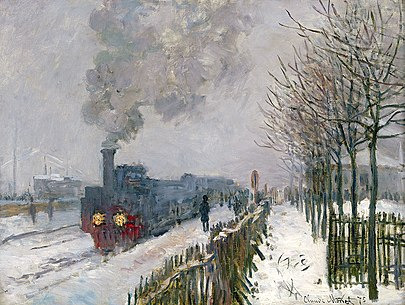
Train in the Snow, 1875, oil on canvas, 59 x 78cm, Musée Marmottan Monet, Paris

The Magpie, 1869, oil on canvas, 89 x 130cm, Musée d'Orsay, Paris

The Water Lily Pond (Nymphéas), 1904, oil on canvas, 90 x 92cm, private collection

The Bridge at Argenteuil, 1874, oil on canvas, 60.5 x 80cm, Musée d'Orsay, Paris
Similarly, I really like J.M.W. Turner, particularly for his dramatic seascapes and his paintings of ruins! Some favourites would be:

Fishermen at Sea/The Cholmeley Sea Piece, 1796, oil on canvas, 91.4 x 122.2cm, Tate Britain, London

The Burning of the Houses of Lords and Commons, 16th October, 1834, 1934, oil on canvas, 92 x 123cm, Philadelphia Museum of Art, Philadelphia

Melrose Abbey, 1822, pencil and watercolour on paper, 19.6 x 13.3cm, private collection
and these are some more things I've studied that I ended up really liking!
Edouard Manet: he was So controversial in nineteenth century Paris it's ridiculous, and i found it fun to look at all the layers of constructed identity in his works! Most well known for Olympia.

Chez le père Lathuille, 1879, oil on canvas, Musée des Beaux-Arts Tournai
Caravaggio: LOVE the horror and detail and drama of his works, third life enjoyers might like all the beheadings skjfhdg. highly recommend looking into this guy's life story and historical context because he. man. he sure was a character! it's also hilarious to read about how hated he was for painting in a naturalistic style. (and. the murder but honestly it seems like they hated his painting more)

Saint Jerome Writing, c. 1605-6, oil on canvas, 112 × 157 cm, Galleria Borghese (one of the tamest of his works skjdfh)
Hiroshige Utagawa and Katsushika Hokusai: had a unit on Japanese print making and !!! i hadn't known much about print as a medium but Holy Shit it's so versatile and the works by these artists are just stunning! want to look more into print for sure :D

Utagawa Hiroshige, Plum Garden, Kamata (Kamata no Umezono), in One Hundred Views of Edo, 1856–59, woodblock print, 34 x 24.1 cm, Brooklyn Museum
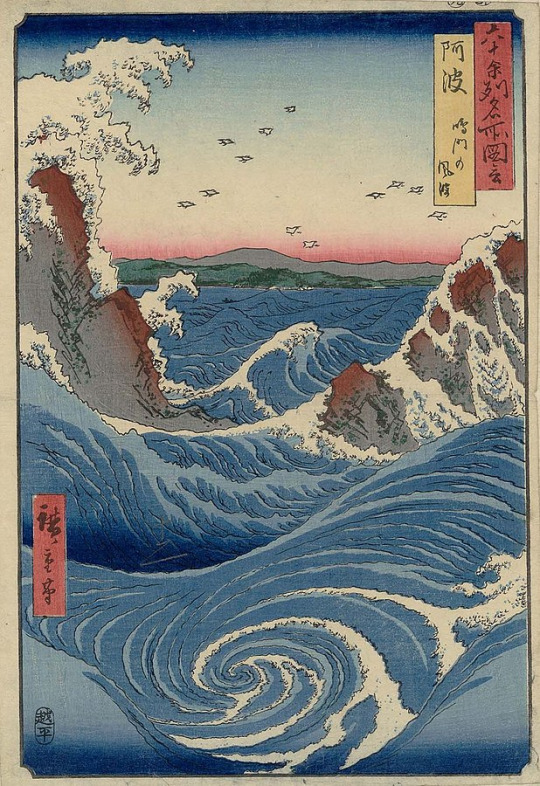
Awa Province: Naruto Whirlpools, in Famous Places in the Sixty-odd Provinces, 1855, woodblock print, 36.5 x 24.4 cm, Museum of Fine Arts, Boston
Hokusai made SO MUCH work but his most famous work by far is:

Katsushika Hokusai, Under the Wave Off Kanagawa, in Thirty-Six Views of Mount Fuji, woodblock print, 1830-1832, 25.7 x 37.8 cm, Metropolitan Museum of Art, New York City
Gothic architecture: haven't gone into much depth with architecture, really liked what i learnt though, and the round arches, ribbed vaults, and tall windows with stained glass are beautiful.

St. Francis Xavier Church, c. 1840, Amsterdam, Holland
and thank you so much for the ask!!! i'd love to hear more about anything art history related from you (or anyone else!), as specific or in depth as you like :D
4 notes
·
View notes
Text

Unknown Sri Lankan
Rock crystal figure of Christ Child, late 16th c. Rock crystal 6.9 × 2.7 × 1.9 cm. Walters Art Museum, Baltimore
The sculpture was likely once adorned with a golden crown inlaid with jewels and would have been elevated on an equally elaborate pedestal. Created for Portuguese Jesuit missionaries on India’s western coast.
https://art.thewalters.org/detail/30289/figurine-of-a-child/
11 notes
·
View notes
Photo

Cornelis van Dalem (attr.) and Jan van Wechelen (attr.) - Church interior with Christ preaching to a crowd -
oil on panel, height: 59 cm (23.2 in); width: 93 cm (36.6 in)
Rijksmuseum, amsterdam. the Netherlands
Cornelis van Dalem (1530/35 – 1573 or 1576) was a Flemish painter and draughtsman active in Antwerp in the middle of the 16th century and an important contributor to the development of landscape art in the Low Countries. Van Dalem introduced into landscape painting new themes, which he derived from his humanistic education, and searched for new ways of representing his themes.
Jan van Wechelen or Hans van Wechelen (c. 1530 – 1570) was a Flemish painter and draughtsman active in Antwerp in the middle of the 16th century known for his landscapes, biblical subjects and genre scenes.
A composition entitled Church interior with Christ preaching to a crowd (Rijksmuseum) is attributed to a collaboration between van Wechelen and van Dalem. It shows a large church interior with a crowd of people in contemporary as well as foreign dress who are listening to Jesus Christ who is preaching while seated near a column. The interior of the church is quite barren and the only decorations seen are some sculptures high on the columns. Various scenes are depicted in the interior of the church such as priests chasing away children, a man with a walking stick and a dog who is accosted by a man in thorn clothes (a beggar?), some dogs sniffing each other, a couple flirting, a man with a shovel etc.
Van Dalem, his collaborator on this composition, was suspected of being a Protestant and possibly the composition contains criticism of the Catholic Church. By placing a preaching Jesus amidst modern church architecture and a contemporary crowd the composition should possibly also be read against the background of the iconoclasm of the Beeldenstorm, which had caused a reflection on the role of religious art in the Low Countries. The attack on sculptures and paintings had placed the entire church interior under discussion. Finding answers to questions such as what a church should be, which type of architecture was suitable and how it should be embellished had become urgent. Contemporary religious practice was compared with the words and deeds of Christ and his apostles and the past and the future of religion, its temples and its rites were under scrutiny.
15 notes
·
View notes